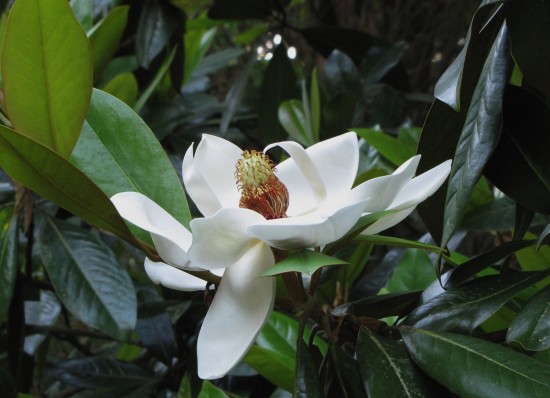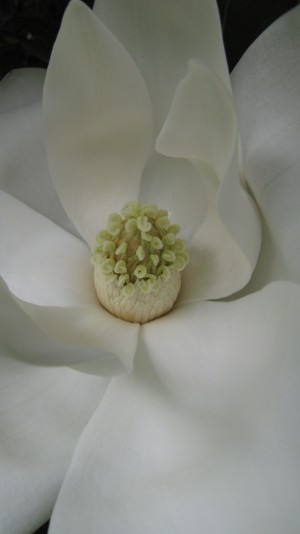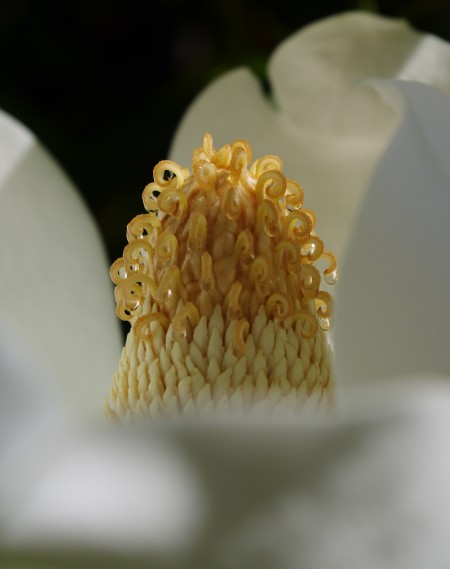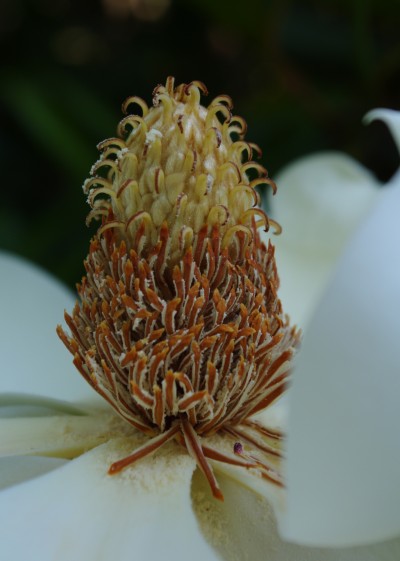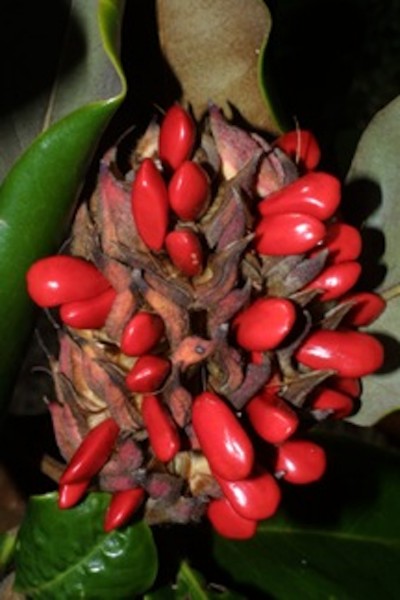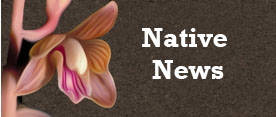NC Native Plant Society:
Plant Details
Magnolia grandiflora
Southern Magnolia, Bull Bay
Scientific Name: |
Magnolia grandiflora |
|---|---|
Genus: |
Magnolia |
Species Epithet: |
grandiflora |
Common Name: |
Southern Magnolia, Bull Bay |
Plant Type |
Tree |
Life Cycle |
Perennial |
Plant Family |
Magnoliaceae (Magnolia Family) |
Native/Alien: |
NC Native |
Size: |
72-100 ft. |
Bloom Color(s): |
White |
Light: |
Sun - 6 or more hours of sun per day, Part Shade - 2 to 6 hours of sun per day |
Soil Moisture: |
Dry, Moist |
Bloom Time: |
May, June |
Growing Area: |
Piedmont, Sandhills, Coastal Plain |
Habitat Description: |
“Maritime forests, mesic Coastal Plain bluffs and flats,bottomlands, now also widely naturalized, spreading from cultivation into wet to mesic forests. The pre-Columbian range was apparently from se. NC south to c. peninsular FL, west to e. TX, largely on the Coastal Plain, now somewhat expanded northward and inland by naturalization from centuries of horticultural planting. Curtis (1860) states that “the northern limit of this tree is in Brunswick County, south of the Cape Fear; but it flourishes in cultivation through all the lower part of the State.” (Weakley 2015). Rare native in the NC Coastal Plain, rare escape from cultivation in the NC Piedmont and Sandhills. |
Leaf Arrangement: |
Alternate |
Leaf Retention: |
Evergreen |
Leaf Type: |
Leaves veined, not needle-like or scale-like |
Leaf Form: |
Simple |
Life Cycle: |
Perennial |
Wildlife Value: |
Has some wildlife value |
Landscape Value: |
Highly Recommended and Available |
State Rank: |
S?: Uncertain (*Key) |
Global Rank: |
G5 - Secure (*Key) |
State Status: |
W1: Watch List: Rare but Relatively Secure (*Key) |
Notes: |
NC Natural Heritage Program NC Rank: S2? |
|
Flower Magnolias are an ancient genus with a "primitive" arrangement of flower parts. The white tepals are lowermost, held open in a bowl-shape. Above them on a cone-like structure are whorls of stamen with the carpels at the top. This structure has been thought to be beetle-pollinated. Paynter, Wilmington, June 2013 |
|
|
Flower Close-up The curly stigma (female parts) at the top with the stamen (male parts) below Paynter, Wilmington, May 2014 |
|
|
Nectar drops on stigma Despite the accepted thinking that beetles are the main pollinators of Southern Magnolia, research by Larry Allain suggests that Southern Magnolias and bees, especially honeybees and some Sweat Bees, interact to pollinate the trees. When a flower first open, UV patterns, fragrance and nectar attract bees to the reflexed stigma. |
|
|
Same flower, next day, showing pollen. On the second day, the production of nectar stops and the anthers produce large amounts of pollen that fall into the petals, attracting bees and beetles. The flowers will stay open for 1 or 2 more days, gradually losing fragrance, UV reflectivity and pollen viability. Note the pollen that now adheres to the stigma above, likely the result of cross-pollination the day before. |
|
|
Fruit with dangling red seeds |
|
|
Close-up of expanded terminal bud in mid-April Garden in Orange County, NC
Bettina Darveaux |
|
|
The evergreen leaves are very thick and elliptical in shape. New Hanover County, NC
Bettina Darveaux |
|
Links: |
|
back to top
go to plant details search
go to plant images search
go to gallery home
back to Initial m Gallery
back to orchids
back to Carnivorous Plants
back to Trilliums

